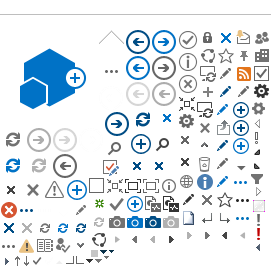Workshop on The Future of Cable TV
Thursday 25 January 2018
Geneva
Opening Remarks
Brahima Sanou
Director
ITU Telecommunication Development Bureau
Heads of National Regulatory Authorities
Distinguished guests, colleagues
Ladies and gentlemen,
It is my great pleasure to welcome you to the Workshop on the Future of Cable TV jointly organized by Telecommunication Development Bureau (BDT) and the Telecommunication Standardization Bureau (TSB).
ITU is committed to connecting the world and it continues to assist the ICT ecosystem in establishing enabling environment that fosters sustainable investment, enhanced innovation dynamics, and connectivity uptake.
For decades we have been observing sustained growth in broadband infrastructure. Even though this exponential uptake is mainly led by mobile technologies, fixed broadband infrastructure remains an important foundation for sustainable growth of the ICT ecosystem.
The latest ITU data estimate is that more than half of the world's households (53.6 per cent ) now have access to internet at home, compared to less than 20 per cent in 2005.
The number of individuals using the internet now exceeds 3.5 billion representing 48 per cent of the world population, mainly relying on mobile technologies.
However, household access to the internet is the most effective way of enabling an inclusive information society in which all people, irrespective of their age, gender, ability or economic or social context can access the internet and the resources which it make available.
Globally, fixed broadband take-off is still moderate, as worldwide there are only 13.1 fixed-broadband subscriptions per 100 inhabitants, compared to 3.4 percent in 2005. The situation is much better in developed countries where the penetration rate reached 31 per cent in 2017.
As we all know the conventional cable TV network has undergone quite a change over the past few years. Operators have increased their services by introducing high speed internet connections and Video-on-demand services besides the linear televisions. The cable television network market is emerging with a growing number of cable subscriptions and increasing demand for digital content.
In developed countries, a significant share of all fixed broadband subscriptions (over 30%, followed by fiber (23%) and led by DSL (43%)) rely on Cable TV infrastructure. The strategic meaning of this means of access to fixed broadband varies among the regions. In the Americas Region, Cable TV infrastructure is the main broadband access technology among fixed broadband subscribers per capita (Cable 9.4%, DSL 7%, FTTH/B 1.7%, other 0.9%). In Europe, Cable TV as access technology is second among all fixed broadband technologies, reaching a penetration rate of 5.7 in comparison to DSL, 18.8 %, fiber 3.8 and others 1%.
Dear ladies and gentlemen,
The convergence being witnessed in the ICT sector has opened new opportunities also for Cable TV operators expanding their reach, improving content delivery as well as expanding the range of services available to subscribers. We are witnessing the evolution of new business models and the generation of new revenue streams.
Today, our world is still evolving, and telecommunications and ICTs are increasingly recognized as the foundation of economic and social development.
Our digital connected world is changing faster and faster– some even call it the 4th Industrial Revolution. Innovation is taking place everywhere and at all levels. New players and new stakeholders are changing the ICT sector to an ICT ecosystem. Consumers are becoming active players in this ecosystem and themselves becoming entrepreneurs, content producers, and investors. With the emergence of new technologies each access infrastructure becomes relevant to ensure that we may reap the benefits from the Internet of Things, Artificial Intelligence, Cloud Services, etc.
In building smart societies, policy makers, regulators, private sector and all stakeholders need to establish an inclusive dialogue to foster an enabling regulatory environment across all sectors in order to put a human face on ICTs and tap into their potential for sustainable development. We need to move from vertical policies and regulations to collaborative policy and regulation to build smart societies. This will be one of issues to be discussed at the upcoming Global Symposium for Regulators, scheduled to take place from 9-12 July 2018, in Geneva.
Within the context of the decisions of the World Telecommunication Development Conference 2017 (WTDC-17), ITU membership tasked BDT to further our work in facilitating ICT infrastructure deployment worldwide, while creating an enabling environment for sustainable growth of the ICT ecosystem.
WTDC-17 also adopted the Regional Initiative for Europe on Broadband, specifically calling for Cable TV to be further studied in the context of innovation dynamics, market developments and an enabling environment. Therefore it is my pleasure and privilege to welcome heads of regulatory authorities from the Europe Region to kick start this conversation to enhance the enabling environment.
ITU is providing you this new platform to demystify the complex interactions of technology, content, services and business models brainstorming on the Future of Cable TV and I look forward to the result of your fruitful discussions.
At the end of the day, we need to work together to bring out innovative applications and services that open the door to unprecedented knowledge, employment and financial opportunities for people everywhere.
I thank you.
